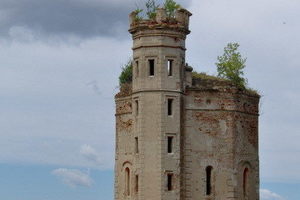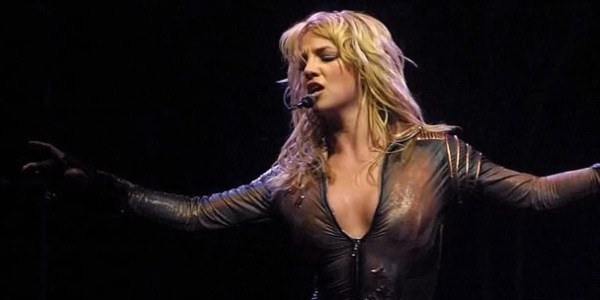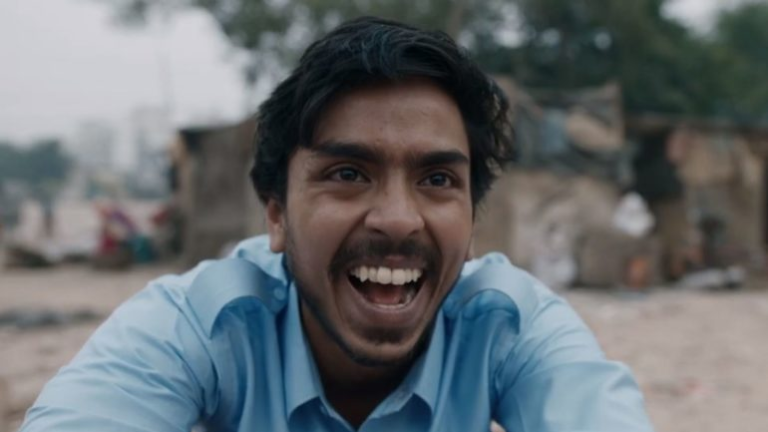How a Young Eagle Huntress Kicks Butt at a Kazakh Tradition
When Mongolia closed its borders earlier this year due to the pandemic, Marinel de Jesus was organizing an all-female trip there and filming the annual winter migration of nomadic families in the Altai Mountains. She focused her documentary work on female Kazakh herders, from the country’s largest ethnic minority. “While doing research on the Kazakh nomadic migrations, I quickly learned that most of the articles or films about the subject involve merely the voices of local males or male explorers. This particular narrative is devoid of female perspectives and voices,” writes de Jesus in an email. “I discovered that my suspicion was right all along—women were the leaders of nomadic migrations in the past.”
She also observed that some female Kazakh nomads participated in traditional eagle hunting, in which a trained raptor is used to help catch foxes or hares. “Eagle hunting, also known as berkutchi, has been around for over 6,000 years. The tradition is handed down from one generation to the next. It developed as a way to obtain fur for clothing,” says de Jesus. “These days, the nomads continue this tradition for the same purpose, apart from the tourism-driven eagle hunting festivals, which are held a couple of times a year.” De Jesus adds that eagle huntresses have over the past few years been competing in more eagle hunting festivals, which are usually dominated by men in Western Mongolia.
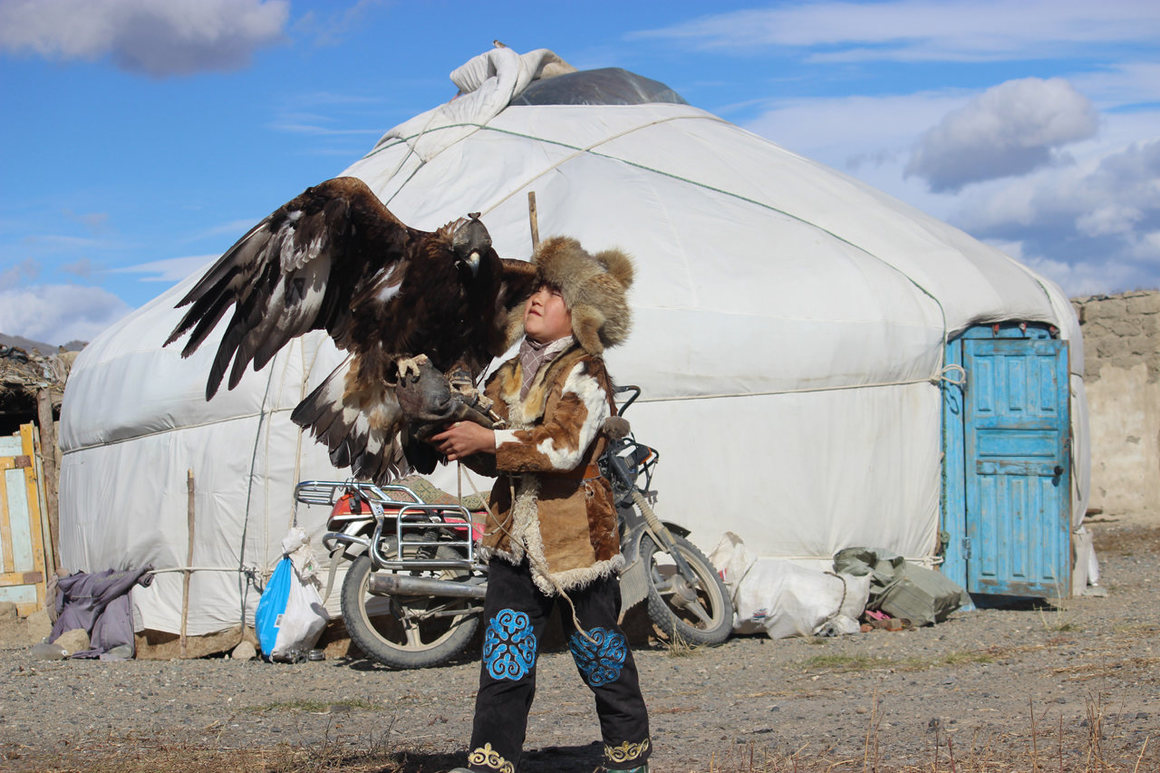
Through a local contact, the former lawyer, who now works to normalize the roles of women, people of color, and immigrants in the outdoor and travel industries, met 10-year old Aimoldir Dayanbek, whose passion is to become the best eagle huntress in the world—and by that age she had already won four competitions. Says de Jesus, “She is an inspiring 10-year-old girl who is dedicated to training her eagle to hunt as a way to continue her grandfathers’ and father’s tradition.”
De Jesus has shared photos of the young hunter with Atlas Obscura, and told us more about the intricacies of Mongolian eagle hunting, Dayanbek’s community support, and what it means when an eagle relieves itself on someone.
Do you know what inspired Aimoldir Dayanbek to become an eagle huntress?
During our interview of Aimoldir for the film, she shared stories about her grandfather, who passed away a few years back. She had a close and loving relationship with her grandfather, who initially taught her about eagle hunting. She shares his dream—to follow her ancestors’ footsteps and become an great eagle hunter.
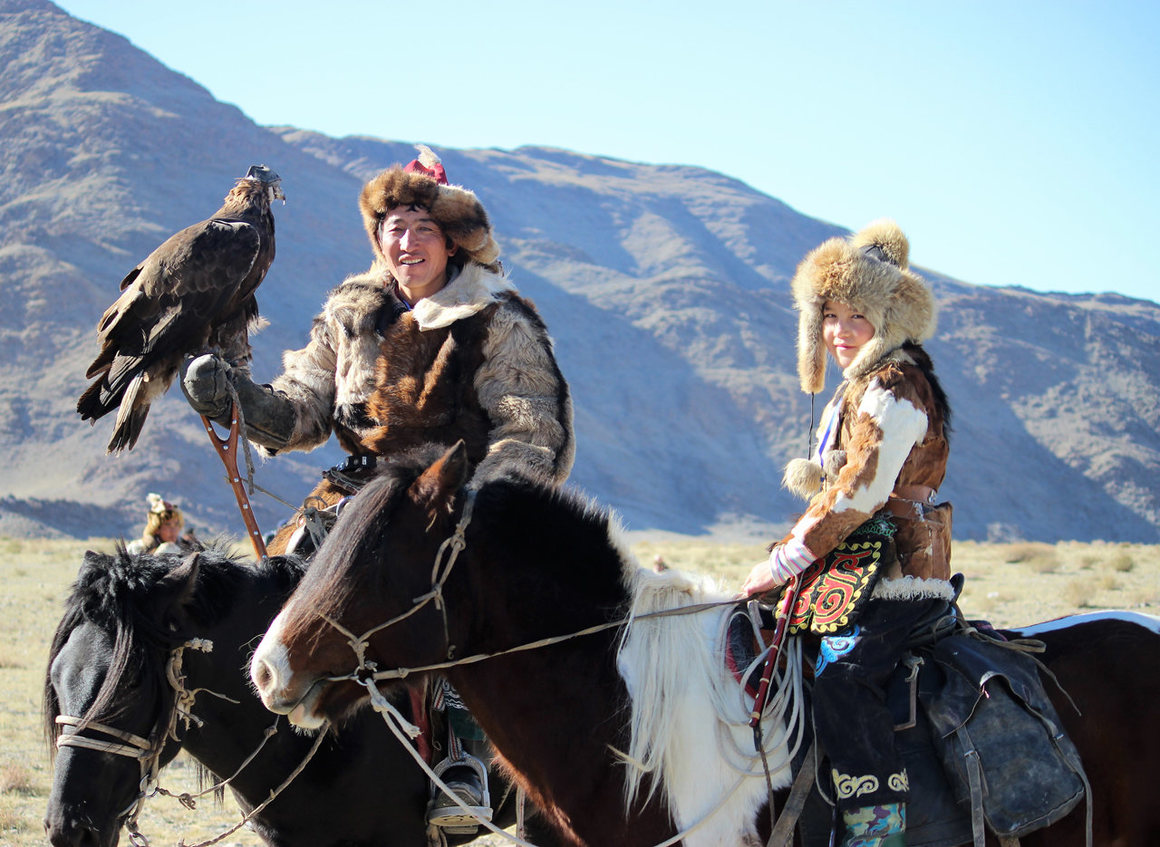
Aimoldir’s father, Mana Dayanbek, believes that Aimoldir is destined to be an eagle huntress because Kazakh nomads believe that when an eagle relieves itself on the person, that is a sign of good luck. This happened to Aimoldir when she was very young.
How was she trained to compete at such a young age?
Aimoldir started training at the young age of four, with a falcon. When she turned seven, she started training with an eagle. Initially, the training required her to build trust with her eagle by feeding and caring for it. Once that bond is established, she had to learn to ride a horse well enough to hold her eagle on her arm. Teaching the eagle how to hunt requires training in the mountains during the winter season, hunting foxes. For competitions, she had to learn to lure her eagle to catch prey by dragging rabbit meat with a string and calling her eagle using a specific vocal sound.
What obstacles did she have to overcome?
When Aimoldir first started training, her family did not have a horse for her to ride. The family had to borrow a well-trained horse from relatives. Also, at the young age of seven, it was a challenge for Aimoldir to carry the eagle on her arm. An eagle typically weighs seven kilograms [about 15 pounds], if not more. Aimoldir had to learn how to carry and manage her eagle on her arm, which required physical strength and hard work.
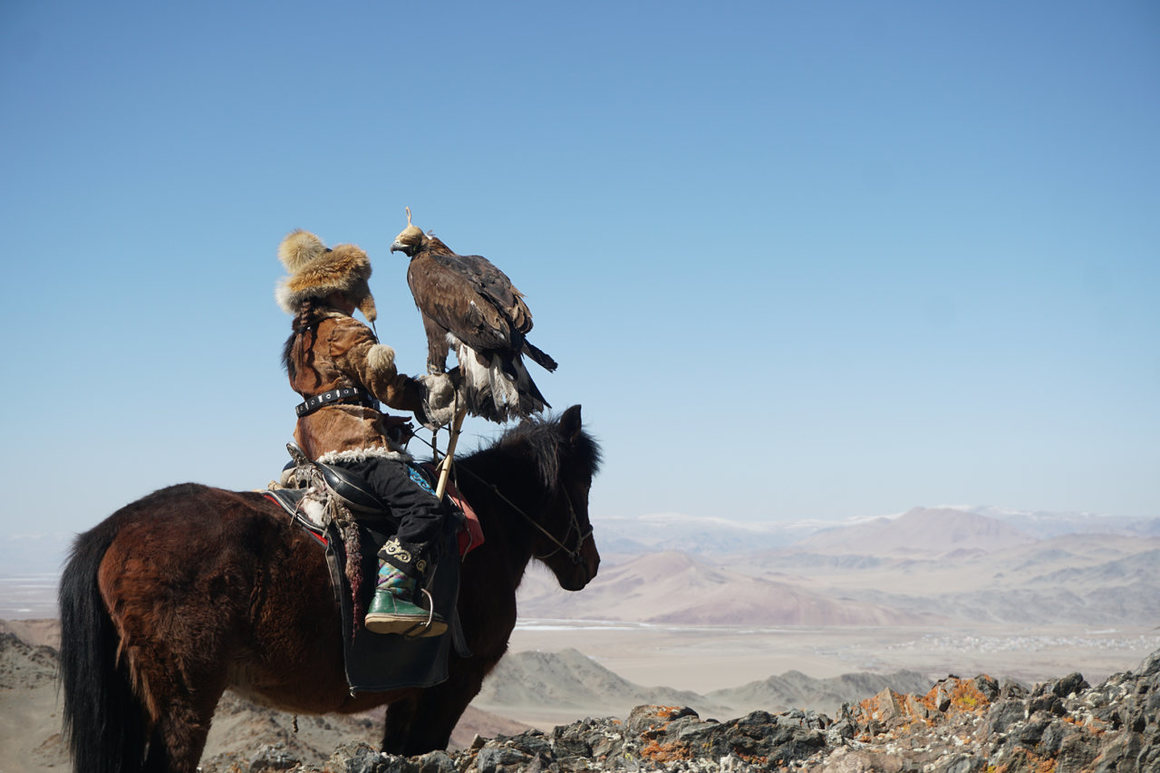
What kind of support does she receive?
Aimoldir’s family and relatives supported her as an eagle huntress from the start. The community of eagle hunters is small in Western Mongolia. Aimoldir’s father and grandfather are known and well-respected within that world.
I witnessed this support first-hand when I attended the 2020 Sagsai Eagle Hunting Festival, where Aimoldir was the youngest and only female competitor. She won first place, against 60 or more male competitors. The entire community was delighted with her win.
What is Kazakh eagle hunting is like, and what does a competition entail?
In real life, eagle hunting is a tradition among the Kazakh nomads that is practiced throughout the year. The nomads must first acquire their eagle in the mountains—usually a female and a young one, but it can be an adult. Once they have their eagle, they work on building a relationship with the bird and training it to hunt foxes. The Kazakh nomads treat the eagles as part of their families. The eagles remain with them for eight to 10 years before they are returned to the wild.
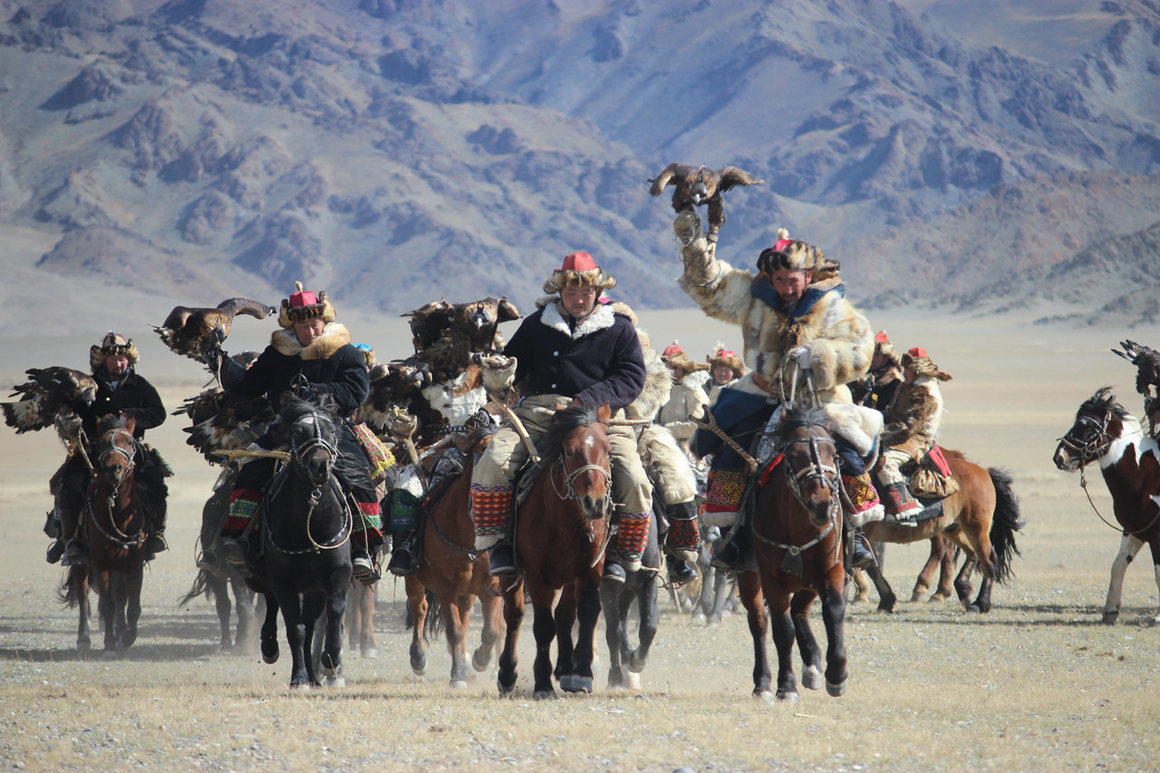
The eagle hunting competition took place in a valley next to a hill, from which an eagle is released to catch rabbit meat pulled by a string. The competitor whose eagle takes the least amount of time to catch the prey wins.
How common is it for women to become eagle huntresses in Mongolia?
Until 2016, when a film on Aisholpan Nurgaiv, the first female eagle hunting competitor, was released, there were no females training or competing at the festivals. Now, about a dozen or more young Kazakh women are doing it. Although the competitions remain male-dominated, this is likely to change, with young women such as Aimoldir inspiring a new generation and rendering the endeavor as more welcoming to women.
The community views Aimoldir as a source of inspiration, in the hopes that more young people will choose to continue this ancient tradition. Many of the locals I have spoken to support Aimoldir and other female huntresses because these young women are helping to preserve this important tradition.
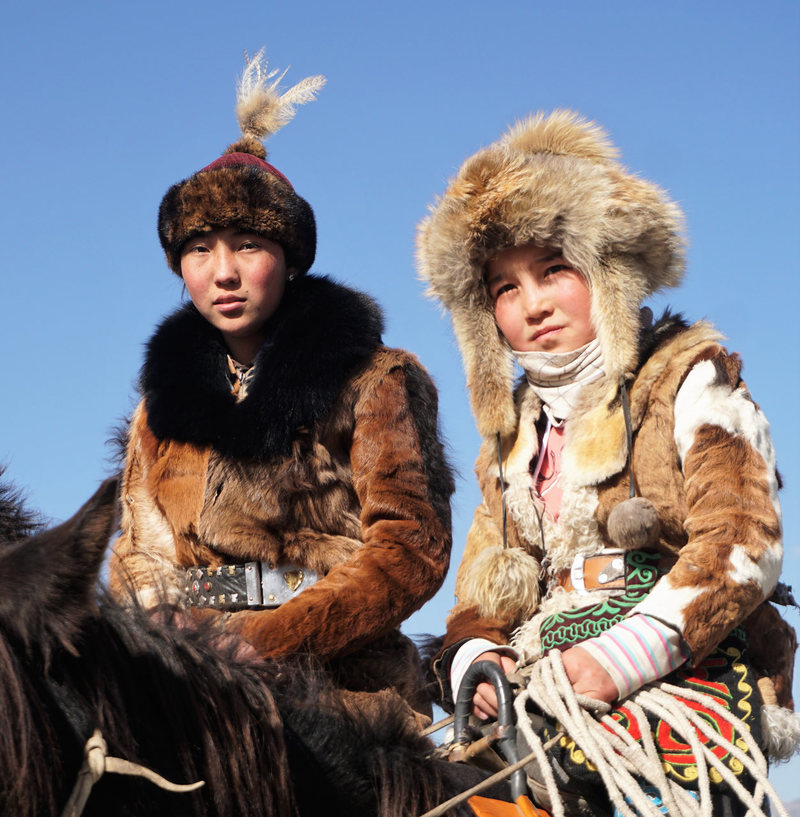
What was the most intriguing moment of the competition you attended?
It is easy to overlook Aimoldir in a crowd of so many larger male competitors. But in competition she was confident and self-assured, flawless in her execution. Her eagle came to her without hesitation. When I asked her if she felt nervous, she answered “No” in a nonchalant manner.
Watching her compete inspired me. It reminded me of how intimidating it can be for a woman to prove herself in a male-dominated space. Aimoldir, however, stayed true to herself and demonstrated her strength and abilities unapologetically—as a 10-year-old would.
